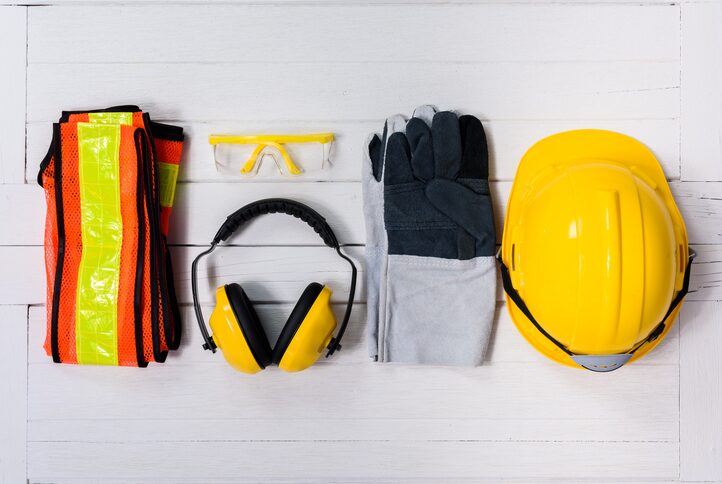OSHA 10 and 30 Hour Online Training by ClickSafety | Starting From $47.00 Only

Construction is a high-risk industry that encompasses various construction, alteration, and repair activities. As a result, construction workers are exposed to multiple risks, due to a lack of construction safety. Falling from rooftops, being struck by heavy construction equipment, unsupervised machinery, electrocutions, silica dust, and asbestos are the most common hazards.
The construction business has a higher death rate than the national average regarding safety. As a result, OSHA has developed a comprehensive list of safety rules and a construction safety compendium, safety training manuals, and more to decrease worker injuries and fatalities.
Before 2014, OSHA’s standard workplace safety guidelines were based on the OSHAS 18001 standard.
The early draft of the ISO, known as ISO 45001, was then created by OSHA. It took the place of OSHAS 18001 in terms of safety regulations.
Over the past 55 years, OSHA has tremendously aided the construction industry’s health and safety. Since OSHA began, worker deaths have decreased from 38 per day to 14 per day. Furthermore, workplace injuries have fallen from 10.9 per 100 employees in 1972 to 2.8 per 100 employees in 2017-2022.
There is a term known as the “Fatal Four” when it comes to construction safety. These are the four key areas where people have been injured or killed. These are some of them:
● Falls
● Being struck by something
● Being stranded in the middle of something
● Electrocution`
The “Fatal Four” were guilty of about 60% of the deaths of construction workers. Every year, 582 workers would be saved if these fatalities were eradicated.
In October, OSHA released its preliminary list of the top ten most commonly cited workplace safety regulations for 2021. OSHA distributes this list to make employers aware of these frequently cited rules so that they can take action to identify and correct known dangers specified in these and other standards before OSHA intervenes.
This is the 11th year, Fall Protection (1926.501) is at the top of the list, followed by Respiratory
Protection (1910.134) and Ladders (1926.1053). Hazard Communication, which had been ranked second for several years, slipped to fifth place last year.
1. 5,295 violations of Fall Protection – General Requirements (1926.501).
2. Respiratory Protection (1910.134): 2,527
3. Ladders (1926.1053): 2,026
4. Scaffolding (1926.451): 1,948
5. Hazard Communication (1910.1200): 1,947
6. Lockout/Tagout (1910.147): 1,698
7. Training Requirements for Fall Protection (1926.503): 1,666
8. Powered Industrial Trucks (1910.178): 1,420
9. Machine Guarding (1910.212): 1,113
10. Personal Protective and Lifesaving Equipment – (1926.102): 1,452
Let’s explore them further:
Significant Conditions:
● Employers must structure the workplace so that employees do not fall off of elevated work stations, platforms, or into gaps in the floor or walls.
● According to OSHA, fall protection must be provided at four feet in general industry workplaces, five feet in shipyards, six feet in construction, and eight feet in extended shoring operations.
● In addition, regardless of the fall distance, OSHA requires that fall protection be provided when operating above dangerous equipment and apparatus.
OSHA requires employers to:
● Ensure that working circumstances are free of known hazards. Maintain clean and, to the extent practicable, dry floors in work areas.
● Workers will be able to choose and receive needed personal protective equipment at no cost.
● Workers should be taught about occupational dangers in a language that they understand.
1926.102(a)(1)
When exposed to eye or face dangers such as dust, molten metal, liquid chemicals, acids or caustic liquids, chemical fumes or vapors, or potentially damaging light radiation, the employer must ensure that each affected employee wears proper PPE ( Personal Protective Equipment ) like eye or face protection.
1926.102(a)(2)
When there is a hazard from flying substances, the employer must guarantee that each affected employee wears eye protection that provides side protection. bindable side protectors that meet the applicable requirements of this section are permitted.
1926.102(a)(3)
The workplace must make sure that each affected worker who wears prescription lenses while performing operations that involve eye hazards wears eye protection designed with the prescription in mind or eye protection that can be worn over the prescription lenses without interfering with the prescription lenses’ or protective lenses’ proper positioning.
1926.1053(a)(1)
Ladders must support the following loads without failure:
1926.1053(a)(1)(i)
Each self-supporting portable ladder must support at least four times the maximum intended load, except extra-heavy-duty type 1A metal or plastic ladders, which must be able to keep at least 3.3x the intended load. The capacity of a ladder to sustain the loads specified in this paragraph is determined by applying or transmitting the required load downward vertically to the ladder. Ladders constructed and tested following the applicable provisions of this subpart’s appendix A will be considered to meet this requirement.
1926.1053(a)(1)(ii)
Every non-self-supporting portable ladder: At least four times the maximum intended load, except for extra-heavy-duty type 1A metal or plastic ladders, which must be able to withstand at least 3.3 times the full intended load. When a ladder is situated at an angle of 75 1/2 degrees from the horizontal, the ability of the ladder to withstand the loads specified in this paragraph is determined by applying or transferring the required load to the ladder in a downward vertical direction. Appendix A-compliant ladders shall be regarded to meet this requirement if they are built and tested following the applicable rules.
GetOSHAInstructors.com is specifically designed platform for OSHA 10 and 30 Hour Authorized Online Training, powered by CickSafety.
Copyright © 2024.